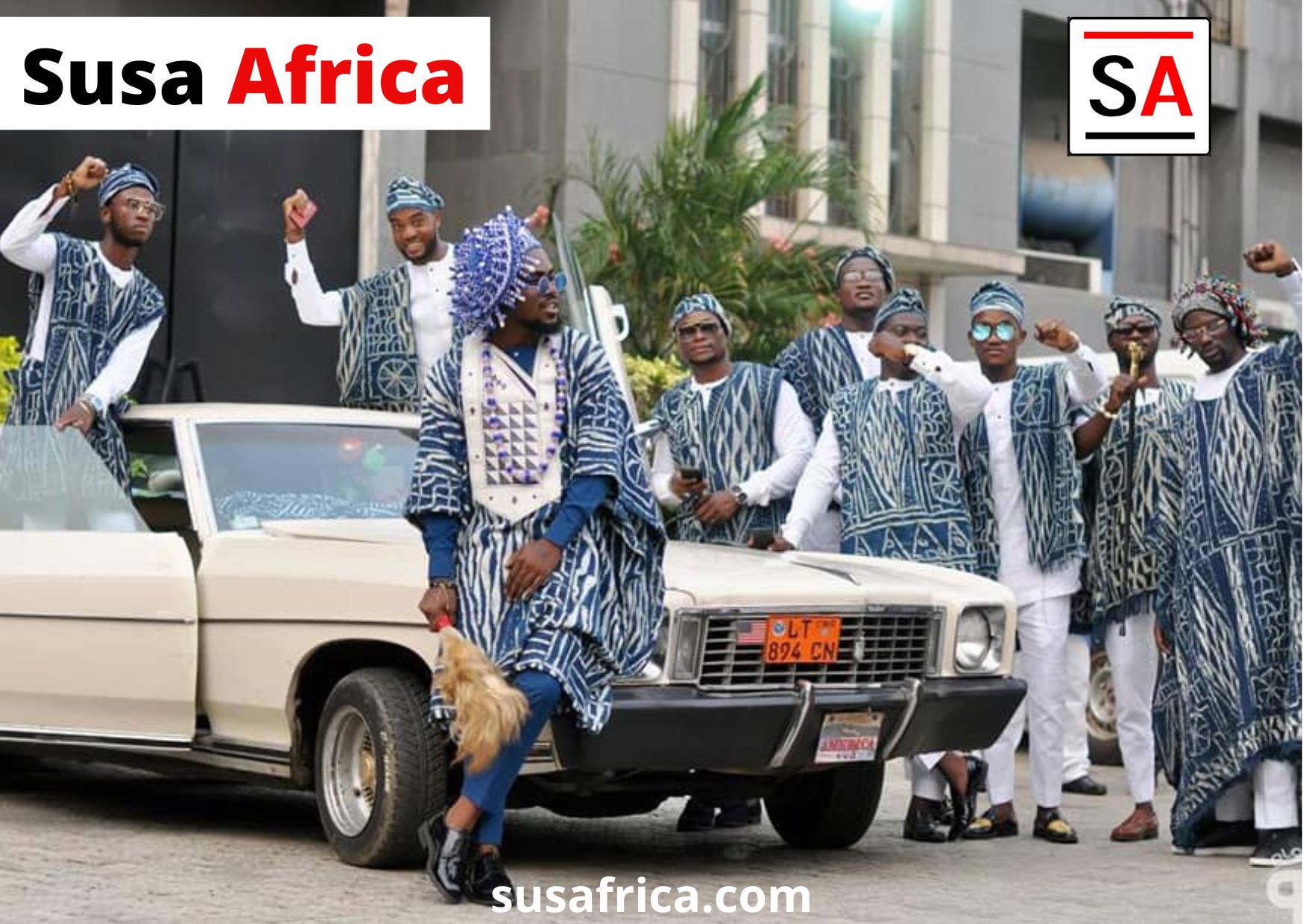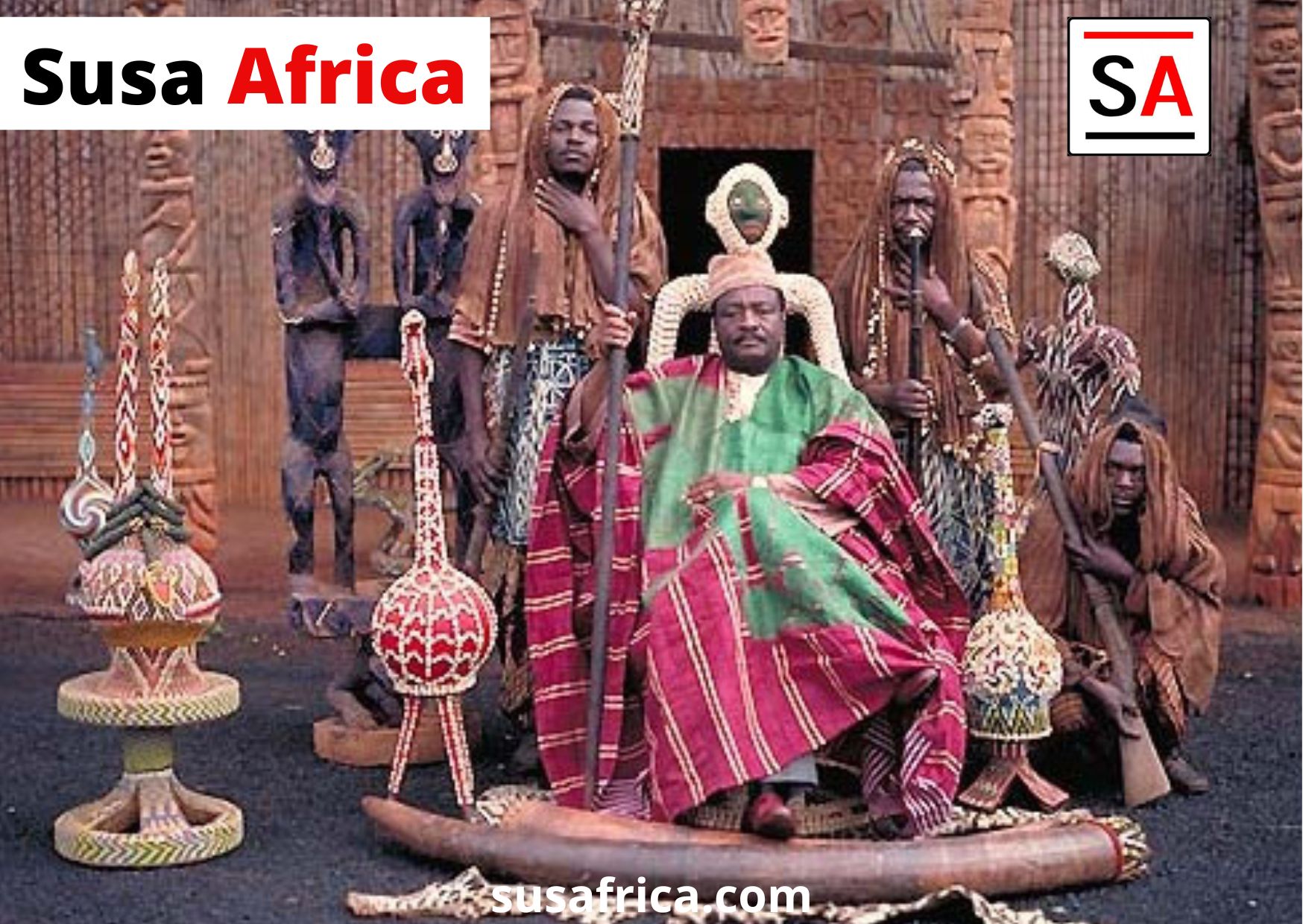The Bamileke occupy the northwest and western highlands of Cameroon. The ethnic group is composed of other related tribes with whom they share a common ancestry forming the largest group at 38% of the total population.
Bamiléké means people of faith. The Grassfields people do not refer to themselves as Bamileke but instead use the names of the individual kingdoms to which they belong or else refer to themselves as “Ngrafi” for “grassfields people”.
They speak a language of the Benue-Congo branch of the Niger-Congo family. The tribes include Bamum, Tikar and other people of the Western highlands. Languages spoken by the Bamileke include variants of Ghomala, Fe’fe, Yemba, Medumba, and Kwa. Traditionally, their system of government was patriarchal and hereditary.

Their origin is uncertain, but it appears that under pressure from Fulani invasions in the 17th century they moved southward in a series of migrations from the region that is now occupied by the Tikar people.
Read More:How King Njoya of the Bamoun Kingdom Invented Indigenous Writing in West Africa
However, the strong migratory characteristic of the Bamileke, has led them to settle widely, not only within Cameroon but also in neighbouring countries. According to Jean-Pierre Warnier, the reason why Bamileke entrepreneurs are found throughout Cameroon and are referred to as “invaders” is because so many of them move around within the country, and even throughout the central African sub-region. In Gabon, for instance, a large share of the urban transportation sector, small businesses, and food supply industry are run by the Bamileke. This migratory tendency is due in part to the Bamileke grasslands’ being so densely populated – 69 persons/km2 compared to 13 persons/km2 for the whole of Cameroon (11 June 2002).

Being a dynamic and entrepreneurial community, the Bamileke can be found in almost all parts of Cameroon and some parts of the world. Since they are a Bantu community, their primary activities revolve around agriculture, an activity which is mainly handled by women.
Each of their kingdoms was ruled by a king (fon) whose position was hereditary within a localized patrilineal lineage. Some of these kings were assisted by a queen mother (mafo). Descent, succession, and inheritance are patrilineal among the Bamileke. Chiefs’ houses are decorated with carved doorframes and house posts; a wide variety of articles was at one time skillfully carved by the Bamileke from wood, ivory, and horn.
Although, ancestor worship is the dominant form of religion; the lineage head preserves the ancestral skulls and offers sacrifices to them. Charms and medicines are prepared by doctors, who also practice divination by interpreting an earth spider’s manipulation of marked blades of grass. However, some Bamileke have adopted Islām, especially in the north; and others have been converted to Christianity.
Today, a number of Black people across the Americas, such as Erykah Badu and Jessica Williams, have traced their lineage back to the Bamiléké people through genetic testing.
Cover Image: King of Bandjoun , one of the numerous Bamileke Kingdoms in Cameroon. Credit: Wikipedia

















Be First to Comment